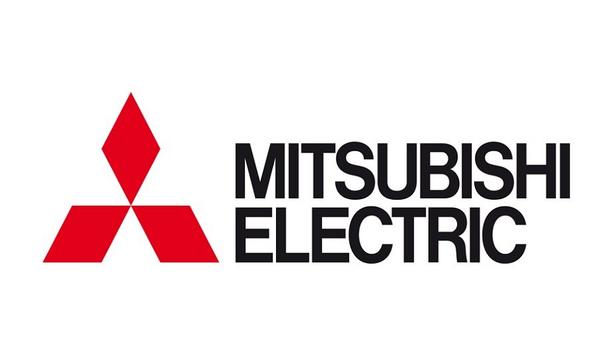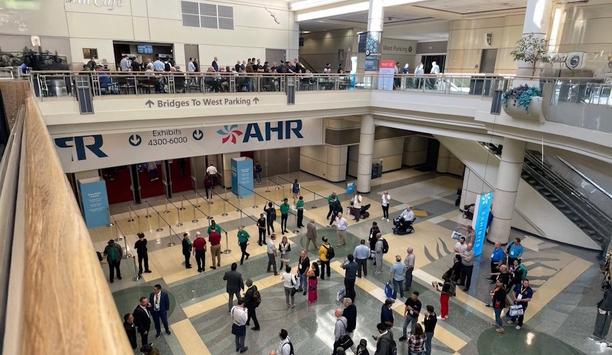Data centers worldwide are under intense pressure. High-powered computing is a global necessity that seemingly gets more demanding by the day. There’s also the need to prioritize sustainability improvements ranging from resource conservation to decarbonization. And data centers must consider their bottom line and remain competitive.
Anticipating the challenges data centers will continue to face, scientists and engineers have innovated two-phase (2-PIC) immersion cooling. With the capacity to meet the elevated cooling requirements driven by high-powered computing, this next-generation solution delivers on environmental priorities by significantly lowering data center energy consumption, slashing, if not eliminating, water use, while supporting decarbonization, circularity missions, and more.
Emergence of 2-PIC
Traditional approaches are fast approaching capacity for meeting current and future cooling needs
The emergence of 2-PIC comes at a critical time, because the traditional cooling methods that have kept data centers up and running so far—namely air cooling and water cooling—are doing so at the detriment of the planet.
Additionally, these traditional approaches are quickly approaching capacity for meeting current and future cooling needs. Air- and water-cooling methods are used in approximately 95% of the estimated 8,000 data centers that exist today.
The criticality of high-powered computing
Once seen as a future need, high-powered computing, and faster-than-ever processing are now established as critical to the operation of businesses, governments, organizations, and other entities that support the way communities function, survive, and thrive.
Whether it’s health and wellness, financial institutions, economic growth, safety and protection, entertainment, education, or any other service supporting our way of life, successfully providing that service fully depends on the ability of data centers to quickly and reliably obtain, store, and process data.
Influence of AI
AI has a profound influence and, generates far more power than traditional internet uses
Moreover, when we say “data centers,” we’re not just speaking of big players like Microsoft, Google, Meta, and Amazon. Equally dependent on high-performance, high-speed computing are enterprise data center operators, such as our governments and military, financial institutions, healthcare systems, educational institutions, and more.
We also must acknowledge the profound influence of artificial intelligence (AI), which generates far more power than traditional internet uses. Its effects are far-reaching, enhancing patient care, supporting risk management and fraud detection in finance, boosting crop yields within agriculture, and more.
The environmental costs of data centers
According to the latest estimates by the International Energy Agency, data centers worldwide produce 1% of energy-related carbon emissions and in 2022 used approximately 460 TWh of electricity per year—equating to 2% of global electricity demand. McKinsey and Company estimates 40% of this electricity is used for data center cooling.
Data centers’ impact on the environment also includes their significant water consumption, averaging 300,000 gallons per day, and a physical footprint that averages 100,000 square feet but in the case of some hyperscale data centers can range between 1.3 to 2 million square feet. In terms of growth, a U.S. market report from Newmark tells us that in the U.S. alone, the U.S. data center footprint will absorb 35 gigawatts by 2030, which is more than twice the data center power consumption of 2022.
The emergence of liquid cooling: the elevated interest in 2-PIC
From reducing energy and water consumption to shrinking physical footprints, 2-PIC offers the planet a better data center solution. In less than two years, traditional cooling systems won’t be able to support the exponential growth in the world’s data processing and storage applications. Based on publicly available product roadmaps from major chip manufacturers, by 2026, air-cooled systems will no longer be able to meet the cooling needs of most next-generation, high-performance computing chips.
Capable of removing heat more effectively than air cooling, liquid cooling uses a liquid such as water or a dielectric fluid to cool the heat-generating components of servers. The liquid can cool these components directly, or it can be done indirectly through a heat exchanger.
 |
| With two-phase immersion cooling the entire server rack is submerged in a tank filled with a dielectric fluid. |
Single-phase and two-phase liquid cooling
Single-phase liquid cooling uses a pump to circulate the liquid through a closed-loop system
Single-phase liquid cooling uses a pump to circulate the liquid through a closed-loop system. Two-phase liquid cooling uses a phase-change material, such as a refrigerant, which evaporates and condenses as it absorbs and releases heat.
With 2-PIC, which is a form of two-phase liquid cooling, the entire server rack is submerged in a tank filled with dielectric fluid. The fluid boils as it’s heated by the components of the servers, creating bubbles that rise to the surface and condense in a heat exchanger. Gravity then returns the condensed fluid to the tank, creating a natural circulation loop that does not require pumps or fans.
Advantages of 2-PIC
2-PIC is commanding attention as the solution for meeting the cooling demands of the high-powered computing components of today and tomorrow. Moreover, the technology of 2-PIC systems, combined with the right dielectric fluid, delivers advantages to “take the heat off” data centers. Here’s a breakdown of additional 2-PIC benefits:
- Up to 90% reduction in energy consumption: Based on modeling completed by the industry, 2-PIC is expected to reduce up to 90% of data center cooling energy consumption and 40% of overall data center energy consumption*. (*Compared to traditional air-cooling technologies)
- Enhanced computing performance and data center reliability: 2-PIC allows servers to operate at higher temperatures and power densities, while reducing the risk of overheating.
- Significant reduction in water consumption: Depending on the data center location and cooling design methodology, water consumption could even be eliminated completely.
- 60% reduction in the physical footprint: 2-PIC reduces the space required for cooling equipment, freeing up more floor area for servers and increasing the rack density of the data center.
- Lower GWP and circularity: Chemours Opteon™ 2P50 is a developmental dielectric heat-transfer fluid, currently pre-commercial, pending regulatory approval. It offers an extremely low global warming potential (GWP) of 10 and was specifically created to optimize the performance of the electronic components in a 2-PIC system. This 2-PIC fluid also enables the reprocessing/reuse of existing fluid to maximize circularity.
- The bottom line: In addition to other compelling data, a recent study commissioned by Chemours and LiquidStack through Syska Hennessy, revealed that, compared with other state-of-the-art liquid cooling methods, 2-PIC can deliver up to a 40% lower total cost of ownership (TCO) and significantly reduce operational expenditures (OPEX), with savings ranging from 54% to 88.6%.
 |
| Benefits of new data center cooling technologies compared to single-phase direct-to-chip, and single-phase immersion methods. |
2-PIC, the future-ready solution
As the world’s reliance on AI and other high-powered computing capabilities escalates, data center cooling solutions must grow with demand while significantly reducing their impact on the environment. In global energy savings alone, 2-PIC could generate an estimated savings of 340 TWh by 2055—the equivalent of powering more than 517 million laptops 24/7.
And even with increasing IT loads, 2-PIC maintains its performance, ensuring long-term cost-effectiveness and adaptability to meet future demands. With society at a crossroads between the criticality of high-powered computing and a planet in crisis, the industry is turning its attention to 2-PIC as the solution for today and tomorrow.


















